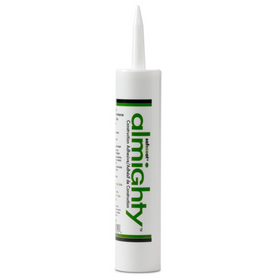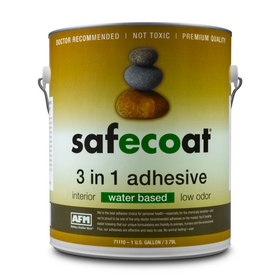
Is There a Way We Can Grow Our Own Homes?
Last Updated: Mar 10, 2025Imagine drawing from biology to grow your home that can repair itself and grow on its own. Yes, this is possible, and yes, it is happening. To keep up with innovative changes in the tech and building industries, the Fab Tree Hab is working on a radical concept to create a home from a tree.
Table of Contents
- The Concept
- So, how does it work?
- How much does it cost?
- Guiding principles behind this concept

The Concept
We here at Rise have talked about biophilic design in the past-- the process of integrating nature into the built environment. Fab Tree Hab is flipping this concept on its head and, instead, finding ways to integrate the built environment into nature.
The Fab Tree Hab team consists of two architects Mitchell Joachim and Javier Arbona, and an environmental engineer Lara Greden. Their idea is to create a single-family home that is as alive as its occupants. This two-level home would include three bedrooms, a kitchen, a bathroom, and an open living space. The structure’s strength relies on the weaving or pleaching, of plants and tree branches. Pleaching is a relatively common practice that some have taken to new levels to create works of art, such as the works of world-renowned Patrick Dougherty.
This experiential home design considers the entire life cycle of the home by bridging the gap between biotechnology and nature. It has found ways to create a symbiotic relationship between the house and the surrounding environment.
The Fab Tree Hab design seeks to protect and embrace the ecosystem as a source of sustainability in the built environment.

So, how does it work?
By using biotechnology, the team at Fab Tree Hab is developing a home design that can be ‘grown’ in a handful of years. Every portion of the home would be built with living nutrients and give back to the local ecosystem. This video provides a brief overview of the concept.
Temporary framing structures (scaffolds) are made off-site using CNC machining. These scaffolds are then sent to a site and fitted against a native tree. The tree trunk itself would provide much of the bearing capacity for the home. The tree’s branches are then pleached, or woven together, to help provide additional support. Using the CNC scaffolds and tree branches, plants would have a framework to grow on. Once the plants are woven enough so that they are structurally sound, the scaffolding would be removed and then used for another project. It would then be infilled with clay and straw-based materials to add insulation and a moisture barrier to the home.

The concept includes a comprehensive approach to rainwater harvesting and water use. A rooftop rainwater collector filters water naturally, gets used, and reused as greywater to irrigate the surrounding gardens. Gravity would be taken advantage of to reduce the energy required to move water throughout the home. A compost toilet limits the use of water, and treats waste and later returns nutrients into the surrounding ecosystem.
Solar gain and proper ventilation are primary focuses in the design as well. Through large south-facing walls, sunlight heats the floor in the main living areas of the home. A solar hot-water heater heats the house through radiant floor pipes. Operable windows would allow proper airflow throughout the space.
To keep in line with the holistic ecology concept of this home, the home itself would be edible at every stage of its life cycle. While occupied, the exterior walls and gardens could provide food for its occupant(s) and animals. Near the end of its life cycle post-occupancy, elements such as the bioplastic windows and plant walls would degrade and provide nutrition to the surrounding ecology.
How much does it cost?
According to the Fab Tree Hab, the costs can shift depending on where you are in the home’s life cycle and one’s location. Upon construction, prices would be similar to construction costs for a traditional home. The primary building materials (clay, gravel, and straw) would cost about the same as concrete. Plants included in the home’s pleaching could be purchased for a nominal fee and propagated from seedlings to reduce costs further. Plumbing, electrical, heating, and lighting costs would be similar to a traditional home.
That said, there are nontraditional operating costs associated with a home like this. Most notably, a homeowner would have to pay for pest management to protect the structure of the house. In addition, homeowners would want to keep up with the maintenance of the home’s water treatment system to ensure it is working correctly.
This concept is a working experiment, and as such, some elements of the idea are unknown at this time. For instance, the soy-based bioplastic window concept is still being explored to understand how they could perform later in a home’s life cycle.

Guiding principles behind this concept
We’ve learned that trees are stronger when in a community. A group of aspen trees, for instance, is considered a single organism because their roots are so intertwined that they create an intricate system of strength. The Fab Tree Hab’s concept includes the idea that these homes would be best suited in a community to provide support for the individual units.
The Fab Tree Hab’s living home structure has four main goals for each home: to use zero pesticides, harvest rainwater, sequester carbon, and eliminate material waste. While the concept is still in the experimental phase, it is evident that the designers intend to work with nature rather than against it.
This concept has taken a lot of visionary thinking to get to this phase. This home encompasses living, breathing architecture, and brings ideas of biophilia to the forefront of the home design.
Fab Tree Hab’s home would absorb greenhouse gas emissions, reduce emissions, and improve the biodiversity in a given region. In addition, the house could self-assemble and self-repair, providing a flexible solution that could be fitting to various lifestyles and environments.
This concept is one way that the modern built environment could use to achieve true sustainability. Buildings account for 25-40% of the world’s total carbon emissions, and this number is expected to rise drastically in the next decade. In addition, three-quarters of total energy consumption in buildings is from the residential sector. Now, more than ever, we are in a position to take ownership of our built environment’s impact on the Earth, and the Fab Tree Hab’s home is undoubtedly a step in the right direction.
Maria Saxton
Located in Roanoke, Virginia, Maria Saxton holds a Ph.D. in Environmental Design and Planning from Virginia Tech. She works as an Environmental Planner and Housing Researcher for a local firm specializing in Community Planning, Architecture, Landscape Architecture, and Historic Preservation. Her dissertation explored the environmental impacts of small-scale homes. She serves as a volunteer board member for the Tiny Home Industry Association.










